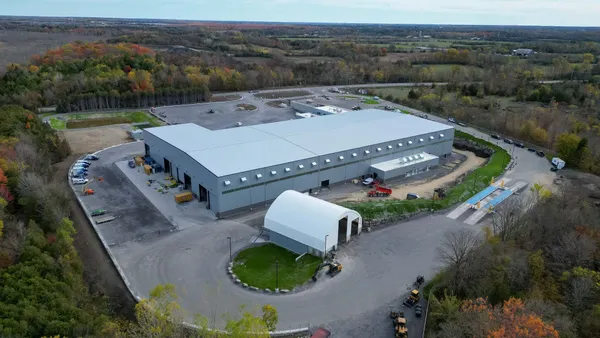UPDATE: July 18, 2018: In a surprising turn of political momentum, the New York City Council passed Intro. 157-C by a vote of 32-13 on July 18. The bill previously passed 4-1 in the council's sanitation committee on July 17.
Sponsor Antonio Reynoso and others heralded this as a triumph for environmental justice and broader industry reform. Those who voted against it expressed concerns about a lack of collaborative dialogue, potential job loss and effects on smaller companies without as much excess permitted capacity as the local industry's larger facility operators.
Full details about the bill's potential effects were outlined in a city environmental assessment statement presented shortly before the committee vote. Initial readings indicate that some tip fees can be expected to go up, and a small number of facilities could be at financial risk due to expected loss of capacity. Talk has already begun about a potential legal challenge from industry associations and local companies as a result.
Dive Brief:
- The New York City Council is expected to vote on Intro. 157-C, a bill to reduce transfer station capacity in four "overconcentrated" community districts at its next meeting on July 18. This will have to be preceded by a vote out of the council's sanitation committee, now scheduled for July 17.
- Per the bill's latest version, the Department of Sanitation would be given authority as of October 2019 to reduce capacity at facilities in north Brooklyn by 50%. Capacity at facilities in the South Bronx and Southeast Queens would be reduced by 33%. Changes would take effect upon permit renewal.
- The bill includes multiple exemptions for organics processing capacity, barge and rail transfer, and emergency situations. Specific provisions are also included to factor in capacity being used for curbside recyclables or construction and demolition debris.
Dive Insight:
New York solved one key waste infrastructure equity challenge by closing the Fresh Kills Landfill in 2001, a multi-decade burden for Staten Island residents, but created a new one by not fully planning for what came next. Following that decision, dozens of new private transfer stations sprang up across the city's outer boroughs.
According to recent DSNY testimony, 26 of the city's 38 putrescible and construction waste transfer stations are in the three target areas. Some of those have always been near residential neighborhoods. Others are in areas that were once industrial, but have changed amid the city's development boom.
New York's 2006 Solid Waste Management Plan was intended to address this with the creation of multiple marine transfer stations, yet that process has been delayed for years and is only now coming to fruition. In the meantime, private transfer stations have remained active hubs for both municipal and commercial waste — particularly in the three target areas.
Working through an environmental justice lens, various advocates and council members have been trying to pass this bill since 2013. The original version came up short that year, as did a subsequent version introduced in 2014. The last-minute collapse of negotiations for that second bill, which happened in December 2017, was seen by some as its official demise.
DSNY and City Hall around signed on to the concept last fall, but its north Brooklyn backers have struggled to gain the necessary support from fellow council members in Queens or the Bronx. While co-sponsor Antonio Reynoso — chair of the sanitation committee — held a hearing on this latest iteration last month, even he didn't expect action would happen so quickly at the time. Yet in the weeks since, local media attention about broader commercial waste reform has spiked and the bill's supporters saw a chance to capitalize on this moment.
That has helped attract additional co-sponsors to the bill. Council Speaker Corey Johnson has also already come out in full support of the bill, unlike his predecessors, and its backers have all but declared the vote a foregone conclusion.
Industry representatives remain firmly opposed and have expressed skepticism about how much the bill will actually change truck traffic or other conditions near the affected facilities. An environmental study — expected any day now before the vote — may offer further clarity on whether the bill's effects will be more tangible than symbolic.









